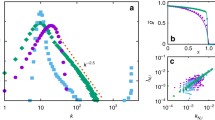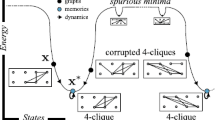Abstract
The functional significance of alternate forms of plasticity in the brain (such as apoptosis and neurogenesis) is not easily observable with biological methods. Employing Hebbian dynamics for synaptic weight development, a three-layer neural network model of the hippocampus is used to simulate nonsupervised (autonomous) learning in the context of apoptosis and neurogenesis. This learning is applied to the characters of a pair of related alphabets, first the Roman and then the Greek, resulting in a set of encodings endogenously developed by the network. The learning performance takes the form of a U-shaped curve, showing that apoptosis and neurogenesis favorably inform memory development. We also discover that networks that converge very quickly on the Roman alphabet take much longer to handle the Greek, while networks which converge over an extended timeframe can then adapt very quickly to the new language. We find that the effect becomes increasingly pronounced as the number of neurons in the dentate gyrus layer decreases, and identify a strong correlation between cases where the Roman alphabet is quickly learned and cases where a few neurons saturate many of their weights almost immediately, minimizing participation of other neurons. Cases where learning the Roman alphabet requires more time lead to larger numbers of neurons participating with a larger diversity in synaptic weights. We present an information-theoretic argument about why this implies a better, more flexible learning system and why it leads to faster subsequent correlated Greek alphabet learning, and propose that the reason that apoptosis and neurogenesis work is that they promote this effect
Similar content being viewed by others
References
Aakerlund L., Hemmingsen R. (1998). Neural networks as models of psychopathology. Biol Psychiatry 43:471–482
Chambers RA., Potenz MN., Hoffman RE., Miranker WI. (2004). Simulated apoptosis/neurogenesis regulates learning and memory capabilities of adaptive neural networks. Neuropsychopharmacology 29:747–758
Erikson PS., Perfilieva E., Bjork-Eriksson T., Alborn AM., Nordburg C., Peterson DA., Gage FH. (1998). Neurogenesis in the adult human hippocampus. Nature Med 4:1313–1317
Gazzaniga MS., Ivry RB., Mangun GR. (2002). Cognitive Neuroscience. Norton, New York
Gould E., Beylin A., Tanapat P., Reeves A., Shors T. (1999). Learning enhances adult neurogenesis in the hippocampal formation. Nat Neurosci 2:260–265
Haykin S. (1999). Neural Networks: a comprehensive foundation. Prentice Hall, Englewood Cliffs
Kornack DR. (2001). The generation, migration, and differentiation of olfactory neurons in the adult primate brain. PNAS pp 4751–4757
Makakis EA., Gage FH. (1999). Adult-generated neurons in the dentate gyrus send axonal projections to field CA3 and are surrounded by synaptic vesicles. J Comp Neuro 406:449–460
Wirth S., Yanike M., Frank LM., Smith AC., Brown EN., Suzuki WA. (2003). Single neurons in the monkey hippocampus and learning of new associations. Science 300:1578–1581
Author information
Authors and Affiliations
Corresponding author
Rights and permissions
About this article
Cite this article
Crick, C., Miranker, W. Apoptosis, neurogenesis, and information content in Hebbian networks. Biol Cybern 94, 9–19 (2006). https://doi.org/10.1007/s00422-005-0026-8
Received:
Accepted:
Published:
Issue Date:
DOI: https://doi.org/10.1007/s00422-005-0026-8




